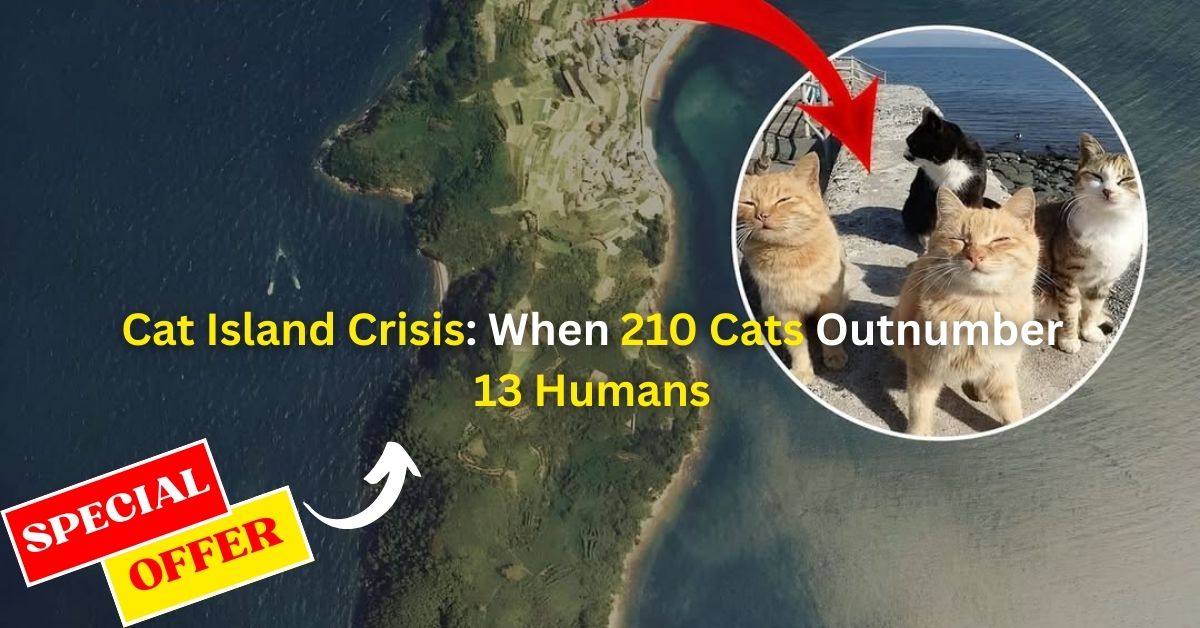Cat Island Crisis:- Envision a location where the feline population surpasses that of humans by a ratio of 16 to 1. This is not a concept from a Pixar film or a whimsical social media trend; it is Aoshima Island, affectionately referred to as “Cat Island,” located off the coast of Ōzu in Japan. Once a tranquil fishing village, this now-renowned island has gained significant attention, boasting a population of 13 humans and an impressive 210 cats.
The prevalence of cats on Aoshima did not occur spontaneously. These cats were initially introduced to serve as a form of natural pest control, effectively managing the rodent population that plagued fishing vessels. The strategy proved successful—perhaps excessively so. As the human population began to decline, a trend observed in many rural areas of Japan, the cats remained and continued to reproduce.
In a short period, the Cat Island transformed into a paradise for Instagram enthusiasts while presenting logistical challenges. Tourists from around the globe traveled to Aoshima to capture photographs alongside sunbathing cats and those roaming the alleys. The local population primarily consists of retirees, who have gradually found themselves outnumbered, outpaced in leisure, and perhaps somewhat overwhelmed by the influx of feline visitors.
Paws and Effect: Why Neutering Is Now Non-Negotiable
In a development reminiscent of a poignant subplot from a Studio Ghibli film, Japanese officials, along with animal welfare organizations, have initiated a program to neuter and sterilize all cats on Aoshima Island. The motivation behind this initiative is the growing challenge faced by the island’s diminishing human population in providing adequate food for the 210 cats that inhabit the area.
Media reports indicate that there are insufficient resources to manage the feeding of such a large feline population. The proposed solution is to humanely curtail the birth rate, thereby preventing an increase in the number of cats on the island.
A Meow-ment of Reflection
The current situation raises profound questions: Who is responsible for the care of community animals when the community itself is in decline? What occurs when a popular tourist destination is more appealing for social media than for actual living? Perhaps most critically, has the idealization of feline existence exceeded reasonable limits?
Nevertheless, there is an undeniably captivating dystopian quality to a location where cats relax on fishing docks, bask in the sun on rooftops, and govern the alleys as if they were regal creatures. At present, Aoshima continues to serve as a unique cultural phenomenon—a whimsical footnote in Japan’s larger narrative of rural depopulation and urban migration.
Read More:- Tesla India Launch 2025: Electric Revolution Hits Indian Roads
However, it is important to acknowledge that while the feline population may be dwindling, they have undeniably triumphed in the realm of the internet and perhaps captured our hearts as well.
FAQs
Q1: Why is Aoshima called “Cat Island”?
Aoshima earned its nickname due to its unusually high cat population, originally introduced to control rodents on fishing boats.
Q2: How many people and cats live on Aoshima?
As of recent reports, there are only 13 human residents and around 210 cats living on the island.
Q3: Why are the cats being neutered or sterilized?
Due to the declining human population, there aren’t enough people to care for and feed the growing number of cats. Neutering is a humane way to manage the population.
Q4: Can tourists visit Aoshima?
Yes, tourists can visit the island, but there are no hotels or restaurants—just plenty of cats and quiet charm.
Q5: Are the cats on Aoshima wild or friendly?
Most of the cats are semi-domesticated and used to human interaction, especially from tourists bringing food and attention.


1 thought on “Cat Island Crisis: When 210 Cats Outnumber 13 Humans”